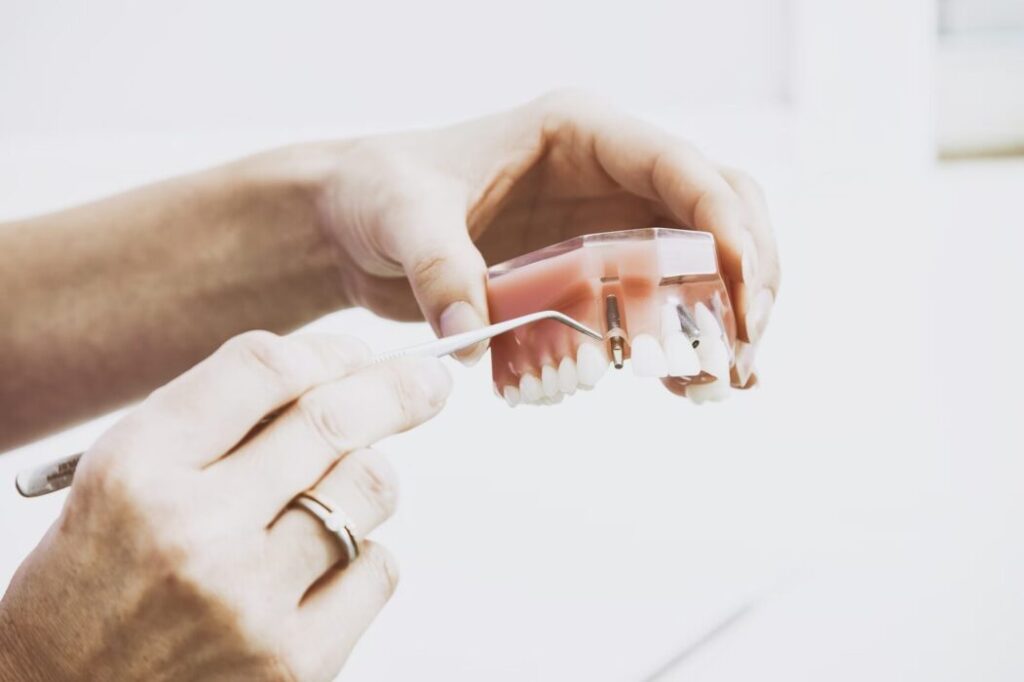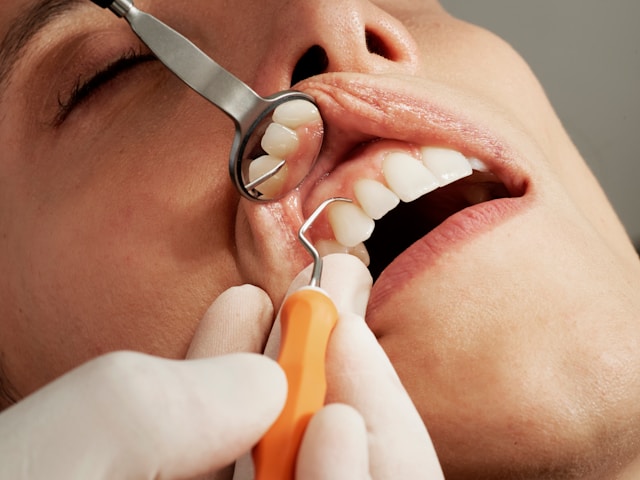Dental implants represent one of the most remarkable achievements in modern dentistry, combining cutting-edge materials science with precise surgical techniques to create tooth replacements that function virtually identically to natural teeth. Understanding the science behind this revolutionary treatment can help you make informed decisions and approach your procedure with confidence.
The Foundation: Osseointegration
The magic of dental implants lies in a biological process called osseointegration, discovered by Swedish orthopedic surgeon Per-Ingvar Brånemark in the 1950s. This process describes how titanium implants literally fuse with living bone tissue, creating a permanent, stable foundation for artificial teeth.
When a titanium implant is placed into the jawbone, specialized bone cells called osteoblasts begin growing directly onto the implant surface. Over several months, new bone tissue forms around and integrates with the implant, essentially making it a part of your jaw. This biological bond is so strong that properly integrated implants can withstand the same forces as natural tooth roots.

Material Science Excellence
Titanium’s unique properties make it the ideal material for dental implants. This biocompatible metal doesn’t trigger immune responses or rejection reactions in the human body. Its strength-to-weight ratio surpasses that of steel, yet it remains light enough to avoid placing excessive stress on surrounding tissues.
Modern implants feature specially treated surfaces that encourage faster and more complete osseointegration. Techniques like acid etching and sandblasting create microscopic textures that provide increased surface area for bone attachment, while some implants include bioactive coatings that further enhance integration.
The Surgical Precision
Advanced imaging technology has revolutionized implant placement accuracy. Cone beam computed tomography (CBCT) creates detailed 3D maps of your jaw, allowing surgeons to plan precise implant positioning while avoiding vital structures like nerves and sinuses.
Computer-guided surgery takes this precision further, using custom surgical guides that position implants exactly as planned. This technology reduces surgical time, minimizes tissue trauma, and improves predictable outcomes.
Understanding Treatment Options
Different situations require different implant approaches. Single tooth replacements use individual implants topped with crowns, while multiple missing teeth might benefit from implant-supported bridges. Full arch replacements can restore entire upper or lower jaws using strategically placed implants.
When considering cosmetic improvements, it’s important to understand the difference between dental implants vs veneers, as these serve entirely different purposes. While veneers improve the appearance of existing teeth, implants replace missing teeth entirely, including both the root and crown portions.
The Healing Timeline
Successful implant treatment requires patience as your body completes the osseointegration process. Initial healing typically takes 3-6 months for lower jaw implants and 4-6 months for upper jaw implants, where bone density is generally lower.
During this period, temporary crowns or bridges may be placed to maintain function and aesthetics. Advanced techniques sometimes allow for immediate loading, where permanent crowns are placed the same day as implants, though this approach requires specific conditions for success.
Factors Affecting Success
Implant success rates exceed 95% when proper conditions are met. Adequate bone density and volume provide the foundation for integration, while healthy gums ensure proper healing. Systemic factors like uncontrolled diabetes or heavy smoking can compromise healing and integration.
Age isn’t typically a limiting factor, as healthy bone can integrate with implants throughout life. However, growing children must wait until jaw development is complete before receiving implants.
Preparing for Success
Pre-surgical preparation significantly impacts outcomes. Maintaining excellent oral hygiene reduces infection risk, while addressing any existing gum disease creates optimal healing conditions. Smoking cessation, even temporarily, dramatically improves healing and integration success rates.
Nutritional support aids healing, particularly adequate protein intake and vitamin D levels. Some patients benefit from bone grafting procedures to augment insufficient bone volume before implant placement.
Long-term Maintenance
Successfully integrated implants require similar care to natural teeth. Regular brushing, flossing, and professional cleanings maintain the health of surrounding tissues. With proper care, dental implants can function for decades, making them one of dentistry’s most durable solutions.


















